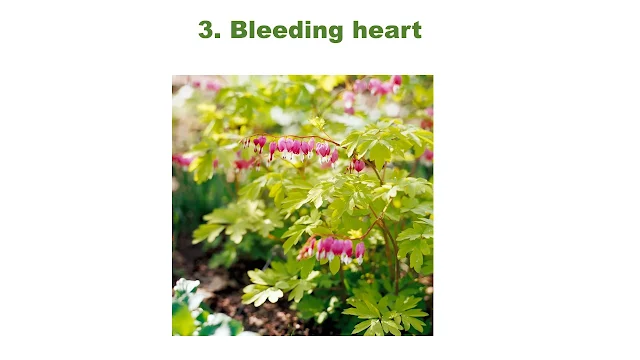A hardy perennial that grows
Those shady spots in your yard don't have to be boring. These easy-care plants add color without needing to water all the time.
A shady spot under a large tree can be challenging to work in your garden, especially if it's on the dry side. The most common shade plants are native to moist woodlands, so they usually require supplemental watering during droughts. But if you choose the right plants that can withstand long periods of drought, you can create a thriving perennial garden even in a shady spot that gets four hours or less of direct sunlight. Most of the types listed here mix and match well together.
1. Hosta
One of the most tried and true shade plants, hostas are low-maintenance with hundreds of varieties to choose from. Hostas are easy to mix and match because the foliage varies in size, shape, and color. Smaller varieties can make a beautiful garden border or fill space at the base of a tree.
2. Lungwort
Another shade-loving plant that tolerates dry soil is lungwort (Pulmonaria spp.). This perennial has tough leaves that are spotted or solid green in color. In spring, lungwort produces bright blue, pink, white, or purple flowers. When used as a ground cover, lungwort helps discourage weeds with its dense growth. Some varieties cope with dry conditions by going dormant, but they return the following spring.
3. Bleeding heart
If you're aiming for cottage garden quality in the shade, try bleeding heart (Dicentra sp.). Its heart-shaped flowers appear in spring, and then the plant "plays dead" once summer arrives. No need to worry, it's resting and will be back next year. Plant bleeding hearts with other colorful plants that can take the stage later in the year.
4. Coral beads
Native to rocky formations that drain easily, coral bells tolerate dry shade gardens well. Although these perennials bloom, it's the foliage that really stands out. Varieties such as 'Magnificent Marble' produce beautiful, multi-colored leaves with a marble-like surface. Other varieties have almost spray-painted leaves, and some have deeply veined colors.
5. Hardy Ferns
You might think of ferns as plants in rainforests or tropical places. However, many ferns grow well in drier shade. For example, the Japanese-painted fern (Athrium niponicum, shown here) has beautiful silver and burgundy leaves, while the deciduous fern turns a beautiful golden red in autumn. Except for the occasional slug, insects tend to leave ferns alone.
6. Wild ginger
Low-growing, heart-shaped foliage makes wild ginger (Asaram spp.) a beautiful ground cover for shade gardens. These plants spread slowly and form a dense mat to prevent weeds. Native western wild ginger (A. caudatum) is one of the most drought-tolerant options, and snails tend to leave it too. Other options such as Canadian wild ginger (A. canadense) and European wild ginger (A. europeaum) may require additional watering in hot, dry climates.
7. Bigroot Geranium
One of the best perennials for dry shade, big root geranium (Geranium macrorhizum) has deep leaves that look like snowflakes. The leaves are slightly fuzzy and resistant to deer and rabbits. In autumn, the leaves turn beautiful shades of red-orange. Over time, the big root geranium slowly spreads and forms a dense foliage carpet on the ground.


















0 Comments